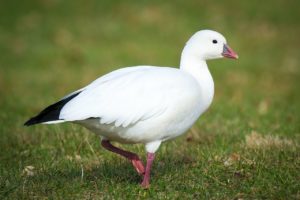 Last Saturday was the annual Midwest Sandhill Crane Count, held each year the third Saturday of April. I’ve been doing these counts for more than 25 years, and they always seem to mark the start of the bird monitoring season for me- the times when we start collecting bird data for research. These include the crane count, migration seasonal counts, the summer bird survey, Breeding Bird Survey, and finally the Christmas Bird Count. Weather for the crane count can be a crapshoot, so to speak. This year was wonderful- about 60 degrees with clouds but no wind- a perfect birdwatching day. Other years have not been so good- I remember a morning of about 12 degrees after snowfall the previous day. That morning I mostly huddled in the car with the window rolled down so that I could hear, sipping hot coffee until the thermos was empty. I still recorded cranes, singing their loud courtship calls despite the chill, but other birds were huddled and hard to find.
Last Saturday was the annual Midwest Sandhill Crane Count, held each year the third Saturday of April. I’ve been doing these counts for more than 25 years, and they always seem to mark the start of the bird monitoring season for me- the times when we start collecting bird data for research. These include the crane count, migration seasonal counts, the summer bird survey, Breeding Bird Survey, and finally the Christmas Bird Count. Weather for the crane count can be a crapshoot, so to speak. This year was wonderful- about 60 degrees with clouds but no wind- a perfect birdwatching day. Other years have not been so good- I remember a morning of about 12 degrees after snowfall the previous day. That morning I mostly huddled in the car with the window rolled down so that I could hear, sipping hot coffee until the thermos was empty. I still recorded cranes, singing their loud courtship calls despite the chill, but other birds were huddled and hard to find.For me, the crane count isn’t just about cranes, it’s the birding “opener.” For a number of years we (myself and another staff member) have walked Willow Trail at Woodland Dunes to record cranes and all the other birds we see or hear. Willow Trail is wonderful in that one walks through very “birdy” habitat- generous cover provided by dogwood, willow, and alder shrubs sprinkled with taller trees, ponds alongside, and eventually a view of the West Twin and its adjacent marshes. The variation in habitat results in the sighting of many species of birds, at least for the early spring season.
We found four pairs of sandhill cranes along our route in our survey block. We are always happy for this- cranes were almost eliminated in Wisconsin by hunting and the abuse of the land some hundred years ago. In the 1930’s there were a dozen or so pairs recorded. After being protected, their population increased slowly, as they only produce a chick or two per year, and many don’t survive. They’ve now recovered to the point where they are found throughout the State, and we found about eight birds in the square mile we monitor.
But along the way we found dozens of other species in our protected habitat- kinglets, thrashers, towhees, tree swallows, snipe and woodcock, mallards and teal, mergansers, grebes, Canada, and even Ross’s geese, a first for us on this count. Ross’s geese are smaller than either Canada or snow geese, but are typically white with black wingtips. They and other birds foraged over mudflats left by receding Lake levels, a habitat that has been absent along the river for the last few years.
This year’s crane count had no downside for us. The birds offered good looks to us, temperatures were great, it didn’t rain, and we had an enjoyable two mile walk. It was worth waking up just after four o’clock in the morning, and left plenty of time for a nap later in the day. Sure, it takes a little effort, but without the incentive to get up and watch birds, I would have missed the lovely morning, and the Ross’s geese.
It was another good birding day.
photo- Ross’s goose Andrew C., Wikipedia
